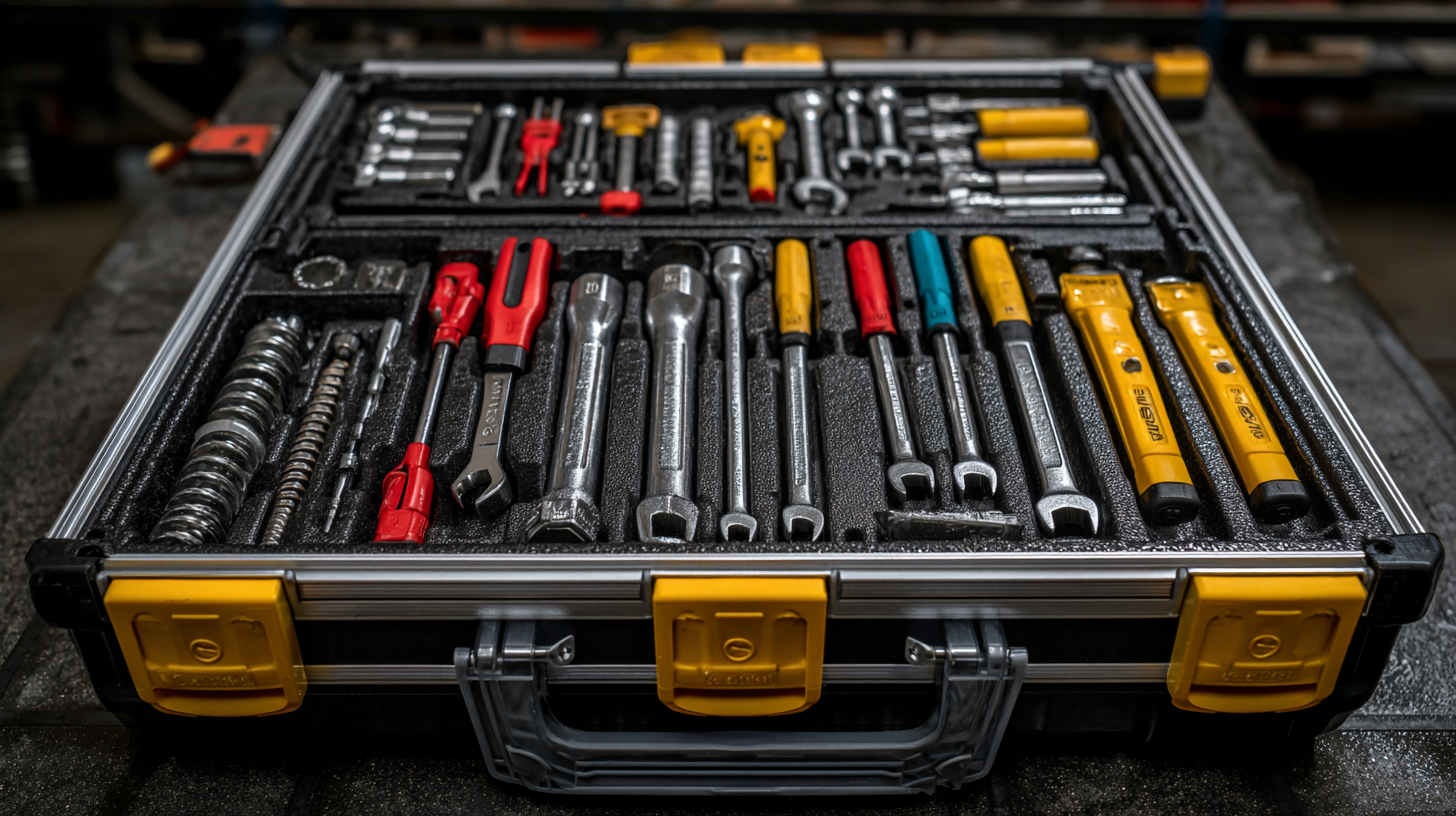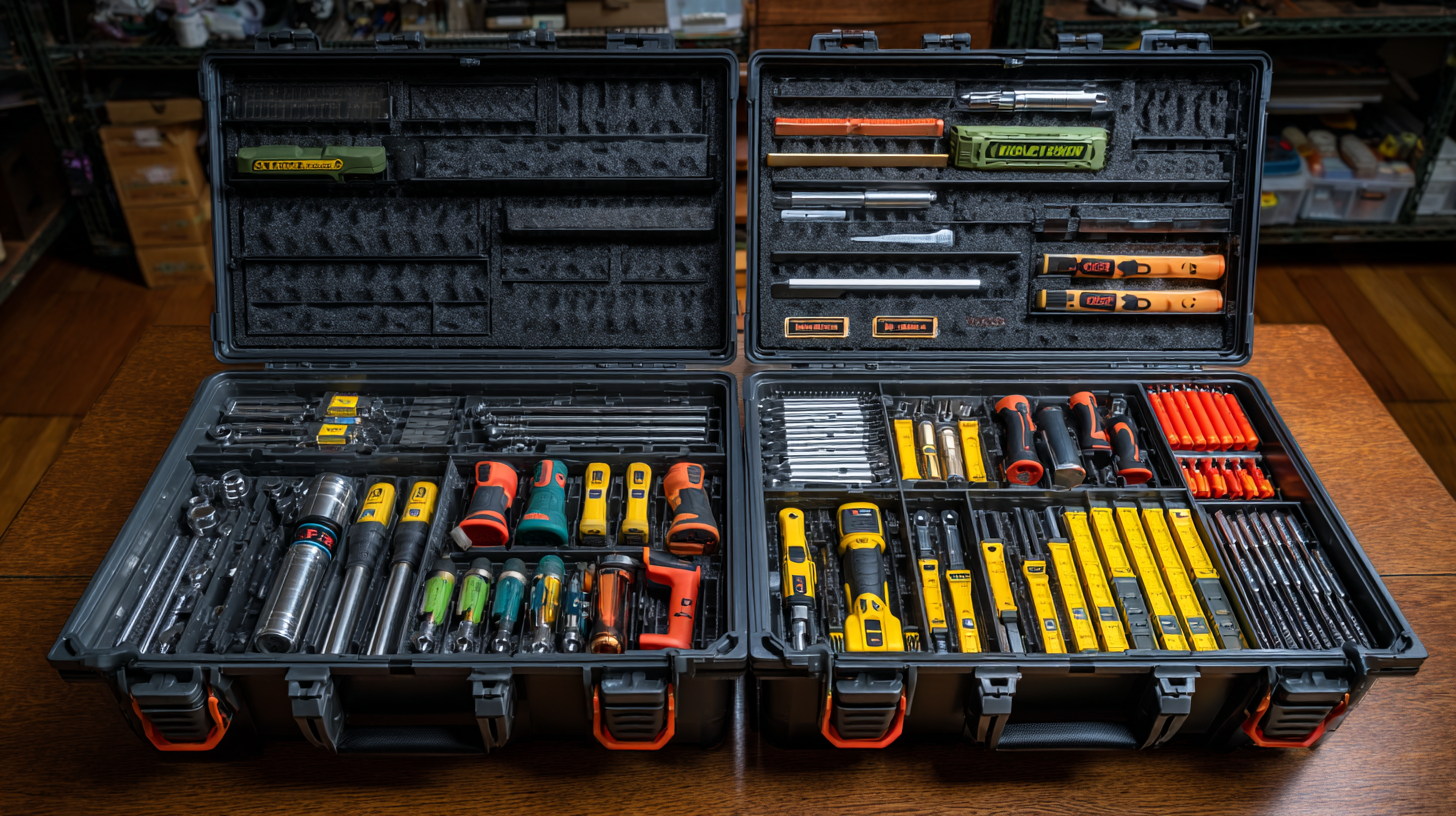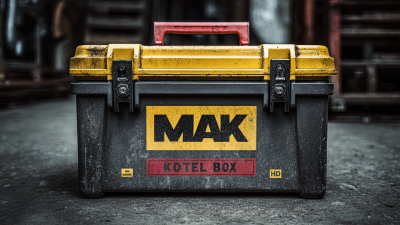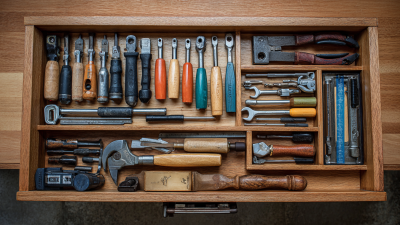In today's world, a well-equipped Tool Box Set is essential for every DIY enthusiast, providing the necessary tools to tackle a wide range of projects with efficiency and ease. Whether you are a seasoned handyman or a beginner looking to explore the world of home improvement, understanding the key components of a comprehensive tool box is crucial. This guide will delve into the fundamental essentials that should be included in your Tool Box Set, ensuring you are fully prepared for any task at hand. From versatile hand tools to power tools, each element plays a vital role in enhancing your DIY experience, enabling creativity and problem-solving. Join us as we uncover the secrets to assembling the perfect Tool Box Set, tailored to meet the needs of every DIY enthusiast, and make your projects a breeze to accomplish.

When it comes to DIY projects, having the right tools at your disposal can make all the difference. A well-stocked toolbox is not just a collection of gadgets; it's a foundation for creativity and problem-solving. Essential tools include a versatile hammer, which is indispensable for driving nails and can be used for light demolition work. A set of screwdrivers, both flathead and Phillips, is crucial for tackling various tasks, from assembling furniture to making minor repairs. Additionally, a quality tape measure ensures precise measurements for any project, preventing costly mistakes.

Beyond the basics, a sturdy utility knife and a reliable pair of pliers can significantly enhance your DIY experience. The utility knife is great for cutting materials ranging from cardboard to rope, while pliers help grip and twist objects with ease. For more extensive projects, a cordless drill with a selection of bits is invaluable, allowing you to drill holes or drive screws quickly and efficiently. By equipping your toolbox with these essential tools, you empower yourself to take on a wide range of projects, turning your DIY dreams into reality.
When it comes to starting your DIY journey, understanding the different types of hand tools and their uses is essential. Hand tools are versatile and can serve various purposes, making them a must-have for any enthusiast. For instance, screwdrivers are fundamental for assembling furniture, while wrenches are crucial for tightening or loosening nuts and bolts. Additionally, pliers come in handy for gripping, twisting, and cutting wires or small components.
Tips: Always invest in a quality set of screwdrivers with both flathead and Phillips options, as they cover most assembly tasks. It's also smart to have a reliable pair of adjustable pliers that can adapt to various sizes of nuts and workpieces.
Moreover, hammers and saws hold significant roles in DIY projects. A claw hammer is perfect for driving nails into walls and removing them, whereas a handsaw allows for precision cutting of wood. Using the right tool for the specific task greatly enhances the efficiency and quality of your work.
Tips: Keep your tools organized in a toolbox to avoid losing them, and ensure you regularly check their condition to maintain safety and performance.

When it comes to embarking on DIY projects, selecting the right power tools is crucial for efficiency and safety. According to a recent report by IBISWorld, the U.S. power tool market is valued at approximately $6 billion, highlighting a growing trend among DIY enthusiasts investing in high-quality tools. Understanding the specifications and applications of various power tools can significantly enhance project outcomes. For instance, a cordless drill is not only versatile for various tasks but also crucial for tight spaces, while miter saws are indispensable for precise angled cuts.
Moreover, consumer preferences are shifting towards battery-operated tools due to advancements in lithium-ion technology, which provide longer run times and reduced charging periods. A survey by Statista indicates that about 73% of DIY users prefer cordless tools for their convenience. Selecting the right power tool often depends on the specific project requirements; for instance, a circular saw is ideal for cutting large sheets of material quickly, while a jigsaw is great for intricate designs. Making informed decisions in your tool selection can lead to better results and smoother DIY experiences.
A well-organized toolbox is essential for any DIY enthusiast looking to maximize efficiency and productivity. To achieve this, start by categorizing your tools based on their function. Group similar items together, such as hand tools, power tools, and fasteners. This not only saves time when searching for a specific tool but also makes it easier to assess what you have and what you may need to acquire. Consider investing in drawer organizers or small bins to keep smaller items like screws and nails in order, preventing them from becoming a tangled mess.
Another key aspect of organizing your toolbox is proper labeling. Clearly label each compartment or drawer to streamline the process of finding tools quickly. This practice not only enhances efficiency but also minimizes the risk of losing tools or forgetting their location. Additionally, regularly declutter your toolbox, removing any unused or broken tools to ensure that the space remains functional and accessible. By implementing these strategies, every DIY enthusiast can unlock the full potential of their toolbox, allowing for smoother project execution and a more enjoyable crafting experience.
Safety is paramount for every DIY enthusiast, especially when diving into home improvement projects. According to the U.S. Consumer Product Safety Commission, approximately 220,000 people are treated for injuries related to hand tools and power tools annually. This startling statistic underscores the importance of having a safety-first mindset when working on DIY tasks. Before you begin any project, it's crucial to familiarize yourself with the specific safety features of your tools, wear appropriate personal protective equipment (PPE), and ensure your workspace is organized and free of hazards.
Equipping yourself with essential knowledge can significantly reduce the risk of accidents. Reports indicate that over 40% of injuries occur due to improper tool use, highlighting the need for training and understanding of each tool's functions. Always make sure to read the manuals provided, practice safe handling techniques, and utilize safety features like guards and locks. Furthermore, consider taking a safety course, as training can empower DIY enthusiasts to approach their projects with confidence and competence, effectively minimizing the chances of injury. Remember, the best tool you can have in your toolbox is knowledge about safety practices.
| Tool | Essential Use | Safety Tips |
|---|---|---|
| Hammer | Nailing and demolition | Always wear safety glasses and be mindful of your fingers. |
| Screwdriver | Driving screws into various materials | Ensure the tip fits the screw head to avoid slipping. |
| Tape Measure | Measuring lengths and distances | Keep your fingers clear of the retracting tape. |
| Utility Knife | Cutting materials like cardboard and plastic | Always cut away from your body and keep the blade retracted when not in use. |
| Pliers | Gripping, twisting, or cutting wires | Use gloves if handling sharp or hazardous materials. |
| Level | Checking surfaces for levelness | Keep the level clean and handle with care to maintain accuracy. |






